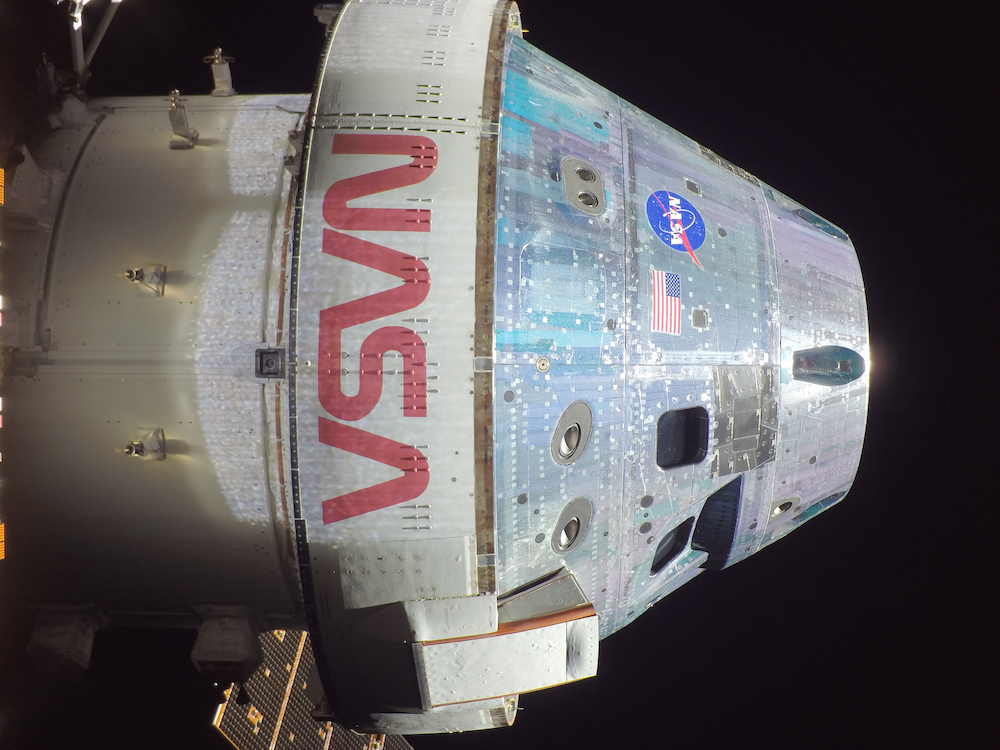
Lockheed Martin’s Orion capsule is a spacecraft designed for deep space exploration. Developed in collaboration with NASA, the spacecraft will be used to send astronauts to the vicinity of the Moon under the Artemis program.
From the Exploration Systems Architecture Study to the Artemis missions
The service module for the 16.5-foot (5-meter) wide Orion capsule is being designed and built by the European Space Agency. It will be used to supply the capsule with power, propulsion, and consumables.
NASA is extending an invitation to the media to witness the unveiling of the first three Orion spacecraft that will carry people to the Moon in Artemis missions. This event is expected to take place at NASA’s Kennedy Space Center in Florida during the summer season.
Engineers are currently involved in various stages of assembling and equipping Orion capsules for Artemis 2 through 4 within the center’s Neil Armstrong Operations and Checkout Building.
The Genesis: Exploration Systems Architecture Study
In the aftermath of the Space Shuttle Columbia accident, NASA embarked on the Exploration Systems Architecture Study, or ESAS.
Released in 2005, ESAS aimed to redefine human space exploration by charting a course to return astronauts to the Moon and eventually venture to Mars. Among other things, it recommended the development of a crew exploration vehicle for these missions.
The Constellation Program and Orion’s birth
Following the release of ESAS, NASA initiated the Constellation program in August 2006 with Lockheed Martin entrusted to build the crew exploration vehicle, which was named Orion.
Overall, the Constellation program aimed to develop advanced spacecraft, rockets, and systems to facilitate human space exploration beyond the confines of low Earth orbit.
Design and development
Lockheed Martin and NASA embarked on an ambitious endeavor to design and develop the Orion spacecraft.
Drawing inspiration from the iconic Apollo spacecraft and the technological advancements of the space shuttle era, Orion was forged with cutting-edge technologies and safety features meant to withstand the rigors of deep space exploration.
Maiden flight: Exploration Flight Test 1
On Dec. 5, 2014, the Orion spacecraft achieved a significant milestone with its uncrewed test flight, Exploration Flight Test 1.
Launching atop a Delta IV Heavy rocket, EFT-1 validated critical Orion systems and capabilities, including the spacecraft’s reentry and recovery mechanisms, while also providing invaluable data for future missions.

Join our Discord Server: Join the community with forums and chatrooms about space!
Transition to Artemis: A New Era of Lunar Exploration
With the cancellation of the Constellation program in 2010, the Orion spacecraft ultimately found new purpose within NASA’s Artemis program. Like Constellation, the Artemis program aims to return humans to the Moon with Orion assuming the role of the crew vehicle for lunar missions.
The Artemis 1 mission in late 2022 saw an uncrewed Orion spacecraft launch atop the Space Launch System rocket to venture around the Moon, testing its systems in the lunar environment.
Artemis 2 and 3: From lunar flyby to the surface
Artemis 2 will mark the first crewed mission for Orion, taking astronauts on a lunar flyby as early as late 2024. That will be followed by the Artemis 3 landing mission several years later.
The significance of Artemis 3 cannot be overstated, as it is expected to see the first woman and the next man set foot on the lunar surface. The mission will mark a historic milestone in lunar exploration, potentially opening new frontiers for scientific discovery and human achievements.
Lockheed Martin’s ongoing commitment
Lockheed Martin says it is continuously refining Orion’s design and systems to meet the demands of deep space exploration. The capsule’s primary objective is to provide a safe and reliable means of transport for astronauts, enabling extended missions beyond low Earth orbit.
The Orion spacecraft aims to pave the way for the future human exploration of Mars and beyond.
The future beckons
NASA is progressing with the assembly of multiple Orion spacecraft for different Artemis missions supporting the vision of returning humans to the Moon and venturing farther into space. The transparent visibility of the spacecraft’s assembly process can be seen as NASA’s unwavering dedication to pushing the boundaries of human space exploration.
FTC: We use income earning auto affiliate links. More.




Comments